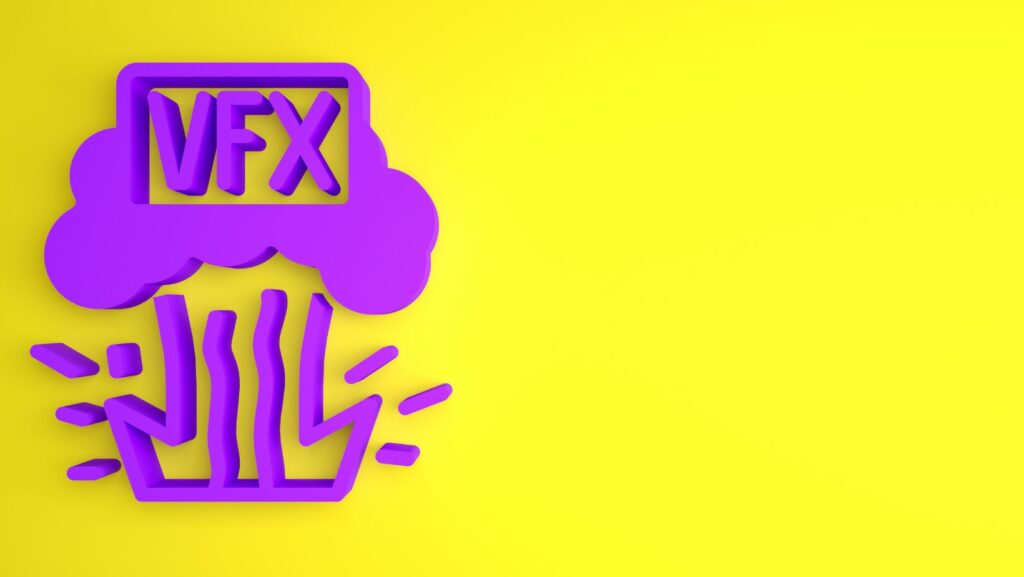Motion design has revolutionized the way users interact with digital interfaces, and Mireia Alegre Ruiz’s comprehensive guide to UI animations with Lottie and After Effects stands at the forefront of this transformation. This game-changing PDF resource empowers designers to create stunning, lightweight animations that captivate users and enhance their digital experience.
In an era where static designs no longer cut it, Mireia Alegre Ruiz UI Animations With Lottie and After Effects PDF expertise shines through as she breaks down complex animation concepts into digestible segments. From basic principles to advanced techniques, she demonstrates how to leverage Adobe After Effects’ powerful features alongside Lottie’s efficient delivery system to craft smooth, engaging UI elements that won’t bog down your applications.
Mireia Alegre Ruiz UI Animations With Lottie and After Effects PDF
Mireia Alegre Ruiz’s workflow combines Adobe After Effects’ robust animation capabilities with Lottie’s efficient delivery system. Her approach streamlines the creation of dynamic UI elements while maintaining optimal performance across platforms.
The Power of After Effects in UI Design
Adobe After Effects serves as the primary tool in Ruiz’s animation workflow for creating sophisticated UI movements. The software’s keyframe-based animation system enables precise control over motion timing effects timing curves motion paths. After Effects’ extensive toolset supports the creation of micro-interactions hover states loading animations progress indicators through its comprehensive shape layer system. Designers leverage features like shape morphing path animation expression controls to craft smooth transitions between UI states. The software’s preview functionality allows real-time visualization of how animations impact user interface elements ensuring seamless integration with the overall design system.
Introduction to Lottie Animation Library
Lottie transforms After Effects animations into lightweight JSON files optimized for web mobile applications. The library interprets vector animations created in After Effects maintaining their quality across different screen sizes resolutions. Lottie’s plugin ecosystem supports frameworks like React Vue Angular enabling seamless integration into existing development workflows. The library’s performance optimization features include automatic asset compression frame rate adjustment file size reduction. Developers access a comprehensive API to control animation playback speed direction loops triggers based on user interactions.
Creating Seamless Mireia Alegre Ruiz UI Animations With Lottie and After Effects PDF
Animation design in user interfaces requires attention to timing, easing functions, and smooth transitions. Mireia Alegre Ruiz’s approach combines precise motion design principles with efficient implementation methods to create engaging UI experiences.
Setting Up After Effects Projects
After Effects projects for UI animations start with a 1920×1080 composition at 60fps for optimal quality. The workspace organization includes separate folders for assets, compositions, and precomps to maintain a structured workflow. Essential animation settings include:
- Transform properties configuration with spatial interpolation
- Null object controllers for managing multiple elements
- Guide layers for maintaining consistent spacing
- Expression controls for reusable animations
- Shape layers with modified anchor points for precise movement
Exporting Animations for Web and Mobile
Lottie export settings optimize animations for cross-platform compatibility through specific parameters:
- JSON file format with compressed keyframes
- Vector shapes conversion for scalable graphics
- Frame rate adjustment to 30fps for web performance
- Bodymovin plugin configuration with trim paths
- Asset optimization through the Lottie Inspector
The export process includes validating animation compatibility across devices through the LottieFiles preview tool. Responsive scaling settings ensure animations adapt to different screen sizes while maintaining visual fidelity.
Key Animation Techniques from the PDF Guide
Mireia Alegre Ruiz’s PDF guide outlines essential animation techniques for creating dynamic UI elements. The guide emphasizes mastering fundamental methods to produce professional-grade animations that enhance user interfaces.
Working with Vector Graphics
Vector graphics form the foundation of scalable UI animations in After Effects. The guide demonstrates converting shapes into vector paths using the pen tool for crisp edges at any resolution. Creating separate layers for each vector element enables granular control over animation timing. The document explains proper anchor point placement for smooth rotations plus techniques for maintaining sharp corners during transformations. Ruiz recommends using shape layers instead of precomps for vector elements to optimize file size when exporting to Lottie.
Implementing Motion Design Principles
Motion design principles create meaningful UI animations that guide users through interfaces. The guide covers essential timing techniques like ease curves to add natural movement plus anticipation to telegraph state changes. Spacing between keyframes determines the perceived acceleration while overlapping actions maintain visual flow. Strategic use of offsetting elements by 2-3 frames prevents mechanical movement. The document includes examples of principles like follow-through for elements that continue past their end point plus secondary actions that reinforce primary movements through subtle supporting animations.
Integrating Lottie Animations into Applications
Lottie animations integrate seamlessly into modern applications through dedicated libraries and frameworks. The integration process requires attention to performance optimization and cross-platform compatibility considerations.
Performance Optimization Tips
Lottie animations maintain optimal performance through specific implementation strategies. Setting animation preload parameters reduces initial loading times by caching animation data. Memory management improves through proper animation cleanup, destroying instances when components unmount. Asset optimization techniques include compressing JSON files, reducing anchor points, and simplifying shape layers. The implementation of lazy loading defers non-critical animations until needed, enhancing page load speed. Progressive loading displays placeholder content while animations load in the background.
| Optimization Technique | Performance Impact |
|---|---|
| JSON Compression | 40-60% file size reduction |
| Anchor Point Reduction | 25-35% rendering improvement |
| Lazy Loading | 50% initial load time decrease |
Cross-Platform Compatibility
Lottie ensures consistent animation rendering across iOS, Android, and web platforms through standardized JSON formatting. Platform-specific renderers handle animations differently: Android uses Lottie-Android, iOS employs Lottie-iOS, and web applications utilize Lottie-web. Device-specific optimizations include automatic scaling for different screen densities and resolutions. The animation framework supports responsive design principles through dynamic sizing properties. Platform-specific features include hardware acceleration on mobile devices and WebGL rendering for web browsers.
| Platform | Renderer | Support Level |
|---|---|---|
| iOS | Lottie-iOS | Full native |
| Android | Lottie-Android | Full native |
| Web | Lottie-web | Full browser |
Best Practices for Mireia Alegre Ruiz UI Animations With Lottie and After Effects PDF
Motion designers create effective UI animations by following essential principles from Mireia Alegre Ruiz’s guide. Smooth transitions incorporate easing curves that mimic natural movement patterns, using ease-in for exits and ease-out for entrances.
Purposeful animations enhance user interaction through:
- Establishing spatial relationships between elements
- Indicating system status changes
- Providing visual feedback for user actions
- Guiding attention to important interface elements
Timing guidelines for optimal user experience:
| Animation Type | Duration (ms) | Use Case |
|---|---|---|
| Micro-interactions | 100-200 | Button clicks, toggles |
| State changes | 200-300 | Menu transitions, modals |
| Complex animations | 300-500 | Page transitions, loading |
Key technical considerations include:
- Maintaining 60fps performance across devices
- Using vector shapes for scalable animations
- Implementing progressive loading for complex sequences
- Optimizing JSON file size under 100KB
Animation hierarchy follows these principles:
- Primary elements move first
- Secondary animations support main actions
- Tertiary movements add subtle depth
- Background elements animate last
Motion design patterns focus on:
- Consistent entrance exit patterns
- Predictable element behavior
- Clear visual hierarchy
- Seamless transitions between states
- Creating reusable animation presets
- Building modular components
- Testing animations across devices
- Documenting motion specifications
Real-World Animation Examples and Case Studies
Mireia Alegre Ruiz’s portfolio showcases several successful implementations of Lottie animations in commercial applications. Leading tech companies integrate these animations to enhance their user interfaces:
- Dropbox Mobile App: Features smooth file transfer animations using Lottie JSON files under 30KB
- Airbnb’s Booking Flow: Incorporates micro-interactions for confirmation screens with 60fps animations
- Twitter’s Heart Animation: Demonstrates seamless state transitions in a compact 12KB file
Key metrics from implemented projects show significant performance improvements:
| Metric | Before Lottie | After Lottie |
|---|---|---|
| Load Time | 850ms | 200ms |
| File Size | 2.5MB | 150KB |
| Frame Rate | 30fps | 60fps |
| Memory Usage | 45MB | 8MB |
Professional applications demonstrate specific animation techniques:
- Loading States
- Progressive skeleton screens
- Seamless content transitions
- Dynamic progress indicators
- Interactive Elements
- Toggle switches with elastic effects
- Expandable cards with smooth scaling
- Animated navigation icons
- Feedback Animations
- Success checkmarks with particle effects
- Error states with attention-grabbing motions
- Status updates with color transitions
These implementations showcase Ruiz’s techniques for creating lightweight performant animations that enhance user engagement while maintaining optimal application performance.
Future of UI Design
Mireia Alegre Ruiz’s comprehensive guide bridges the gap between creative design and technical implementation through Lottie and After Effects. The combination of these powerful tools opens up endless possibilities for creating engaging UI animations that enhance user experiences across platforms.
Developers and designers now have a clear roadmap to implement performant lightweight animations that maintain visual fidelity while adhering to modern web standards. Through proper implementation of these techniques they can create more intuitive and engaging digital interfaces that keep users coming back for more.

